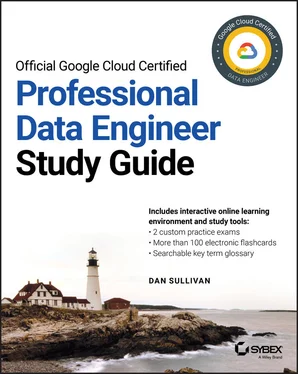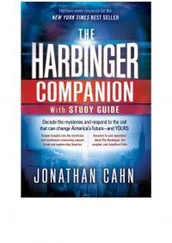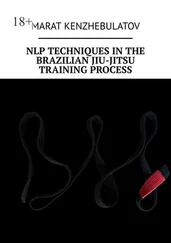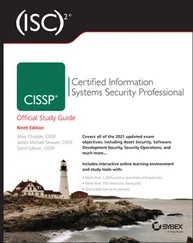4 Chapter 4Figure 4.1 Summary of compute option featuresFigure 4.2 Edge computing brings some computation outside the cloud and closer to where th...Figure 4.3 A hub-and-spoke message broker patternFigure 4.4 Simple asynchronous message processing
5 Chapter 5Figure 5.1 A basic VM instance provisioning form in the cloud consoleFigure 5.2 Form for creating an instance templateFigure 5.3 Form for creating a managed instance groupFigure 5.4 Cloud console user interface for creating a Kubernetes clusterFigure 5.5 Form to create a Bigtable instanceFigure 5.6 A cloud console form for creating a Cloud Dataproc clusterFigure 5.7 A example log listing in Stackdriver Logging
6 Chapter 6Figure 6.1 Create Role form in the cloud consoleFigure 6.2 Selecting permissions from predefined rolesFigure 6.3 An example of a redacted image generated by the Data Loss Prevention API
7 Chapter 7Figure 7.1 Cloud Bigtable uses a cluster of VMs and the Colossus filesystem for storing, a...Figure 7.2 An example heatmap generated by Cloud Bigtable Key Visualizer Figure 7.3 Specifying multiple clusters when creating a Cloud Bigtable instanceFigure 7.4 Cloud Spanner distributes splits across servers to avoid hotspots.Figure 7.5 An example query execution plan
8 Chapter 8Figure 8.1 Users can search and browse data assets from the Data Catalog overview page.Figure 8.2 Example Data Catalog tag template Figure 8.3 Cloud Dataprep shows statistics about the distribution of data in attributes. Figure 8.4 An example report showing Google Analytics data Figure 8.5 An example Cloud Datalab notebook
9 Chapter 9Figure 9.1 ML pipelines are usually executed in cycles.Figure 9.2 An example of a dataset that can be classified with a linear modelFigure 9.3 An example of a dataset that cannot be classified with a linear modelFigure 9.4 Neural networks have hyperparameters to specify the number of layers and the nu...Figure 9.5 Random forest models have hyperparameters specifying the maximum number of tree...Figure 9.6 The dashed line is a linear model that does not overfit, and the solid line fit...Figure 9.7 A confusion matrix for a classifier making 100 predictions (n = 100)
10 Chapter 10Figure 10.1 CDNs distribute content to servers around the globe.Figure 10.2 Edge computing can be used to process data locally and then send summary data t...Figure 10.3 Reference architecture for Cloud IoT
11 Chapter 11Figure 11.1 An example of how SVMs can be used to predict discrete valuesFigure 11.2 An example decision tree to predict the type of an animalFigure 11.3 An example logistic regression function using a sigmoid curveFigure 11.4 A simple linear regression exampleFigure 11.5 An example deep learning networkFigure 11.6 Examples of a (a) sigmoid function, (b) hyperbolic tangent function, and (c) re...Figure 11.7 The ROC is the curved line, and the AUC is the area under that curve line.
1 Cover
2 Table of Contents
3 Introduction
1 iii
2 iv
3 v
4 vii
5 ix
6 xi
7 xxiii
8 xxiv
9 xxv
10 xxvi
11 xxvii
12 xxviii
13 xxix
14 xxx
15 xxxi
16 xxxii
17 xxxiii
18 xxxiv
19 xxxv
20 xxxvi
21 xxxvii
22 xxxviii
23 1
24 2
25 3
26 4
27 5
28 6
29 7
30 8
31 9
32 10
33 11
34 12
35 13
36 14
37 15
38 16
39 17
40 18
41 19
42 20
43 21
44 22
45 23
46 24
47 25
48 26
49 27
50 29
51 30
52 31
53 32
54 33
55 34
56 35
57 36
58 37
59 38
60 39
61 40
62 41
63 42
64 43
65 44
66 45
67 46
68 47
69 48
70 49
71 50
72 51
73 52
74 53
75 54
76 55
77 56
78 57
79 58
80 59
81 61
82 62
83 63
84 64
85 65
86 66
87 67
88 68
89 69
90 70
91 71
92 72
93 73
94 74
95 75
96 76
97 77
98 78
99 79
100 80
101 81
102 82
103 83
104 84
105 85
106 86
107 87
108 88
109 89
110 90
111 91
112 92
113 93
114 94
115 95
116 96
117 97
118 98
119 99
120 100
121 101
122 102
123 103
124 104
125 105
126 106
127 107
128 108
129 109
130 110
131 111
132 112
133 113
134 114
135 115
136 116
137 117
138 118
139 119
140 120
141 121
142 122
143 123
144 124
145 125
146 126
147 127
148 128
149 129
150 130
151 131
152 132
153 133
154 134
155 135
156 136
157 137
158 139
159 140
160 141
161 142
162 143
163 144
164 145
165 146
166 147
167 148
168 149
169 150
170 151
171 152
172 153
173 154
174 155
175 156
176 157
177 158
178 159
179 160
180 161
181 162
182 163
183 165
184 166
185 167
186 168
187 169
188 170
189 171
190 172
191 173
192 174
193 175
194 176
195 177
196 178
197 179
198 180
199 181
200 182
201 183
202 184
203 185
204 186
205 187
206 188
207 189
208 190
209 191
210 192
211 193
212 194
213 195
214 196
215 197
216 198
217 199
218 200
219 201
220 202
221 203
222 204
223 205
224 206
225 207
226 208
227 209
228 210
229 211
230 212
231 213
232 214
233 215
234 216
235 217
236 218
237 219
238 220
239 221
240 222
241 223
242 224
243 225
244 226
245 227
246 228
247 229
248 230
249 231
250 232
251 233
252 234
253 235
254 236
255 237
256 238
257 239
258 240
259 241
260 242
261 243
262 244
263 245
264 246
265 247
266 248
267 249
268 250
269 251
270 252
271 253
272 254
273 255
274 256
275 257
276 258
277 259
278 260
279 261
280 262
281 263
282 264
283 265
284 266
285 267
286 268
287 269
288 270
289 271
290 272
291 273
292 274
293 275
294 276
295 277
296 278
297 279
298 280
299 281
300 282
301 283
302 284
303 285
304 286
305 287
306 288
307 289
308 290
309 291
310 292
311 293
312 294
313 295
314 296
315 297
316 298
317 299
318 300
319 301
320 302
321 303
322 304
323 305
324 307
325 308
326 309
327 310
328 311
329 312
330 313
331 314
332 315
The Google Cloud Certified Professional Data Engineer exam tests your ability to design, deploy, monitor, and adapt services and infrastructure for data-driven decision-making. The four primary areas of focus in this exam are as follows:
Designing data processing systems
Building and operationalizing data processing systems
Operationalizing machine learning models
Ensuring solution quality
Designing data processing systems involves selecting storage technologies, including relational, analytical, document, and wide-column databases, such as Cloud SQL, BigQuery, Cloud Firestore, and Cloud Bigtable, respectively. You will also be tested on designing pipelines using services such as Cloud Dataflow, Cloud Dataproc, Cloud Pub/Sub, and Cloud Composer. The exam will test your ability to design distributed systems that may include hybrid clouds, message brokers, middleware, and serverless functions. Expect to see questions on migrating data warehouses from on-premises infrastructure to the cloud.
Читать дальше












